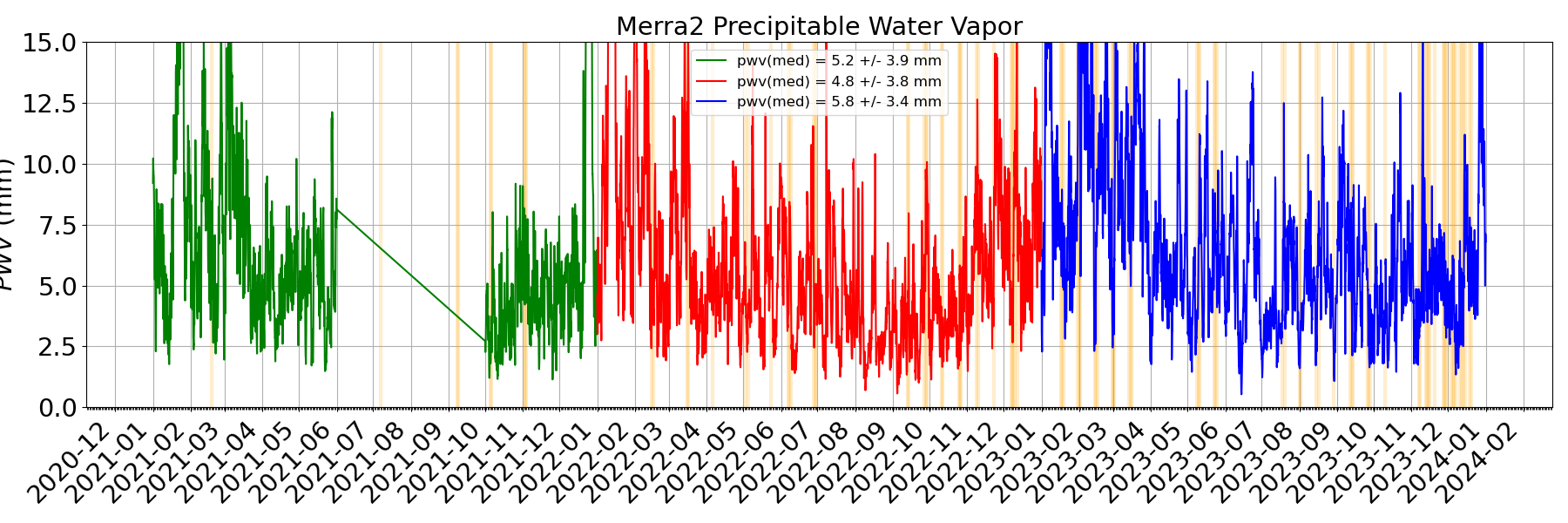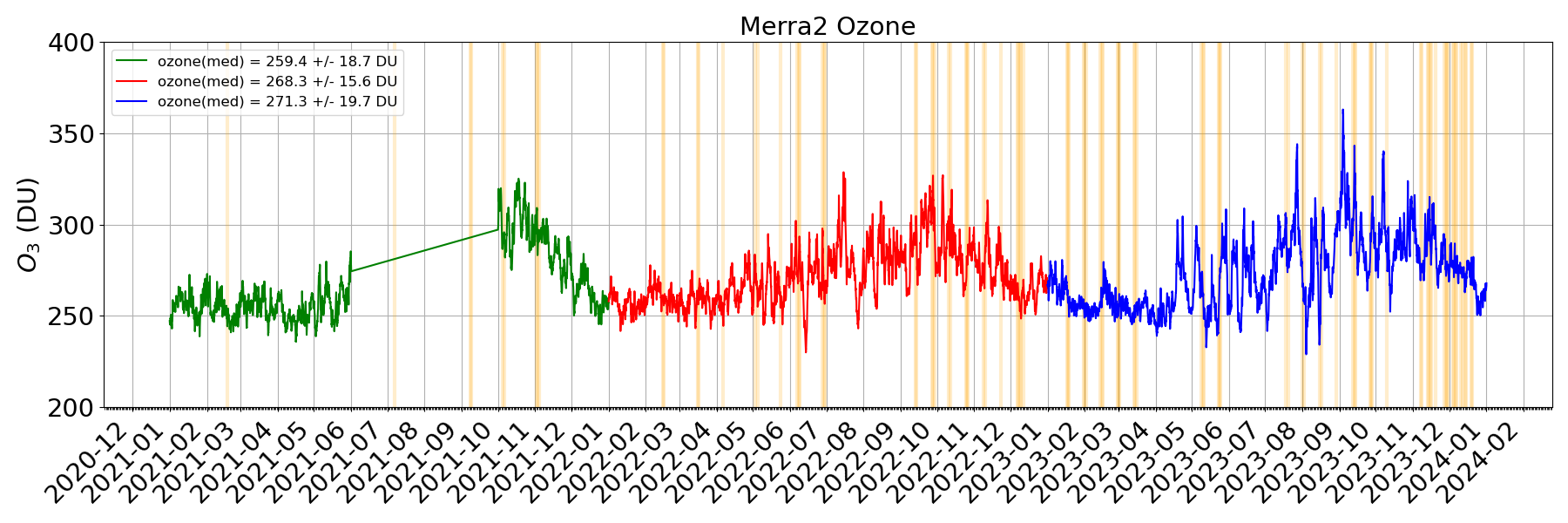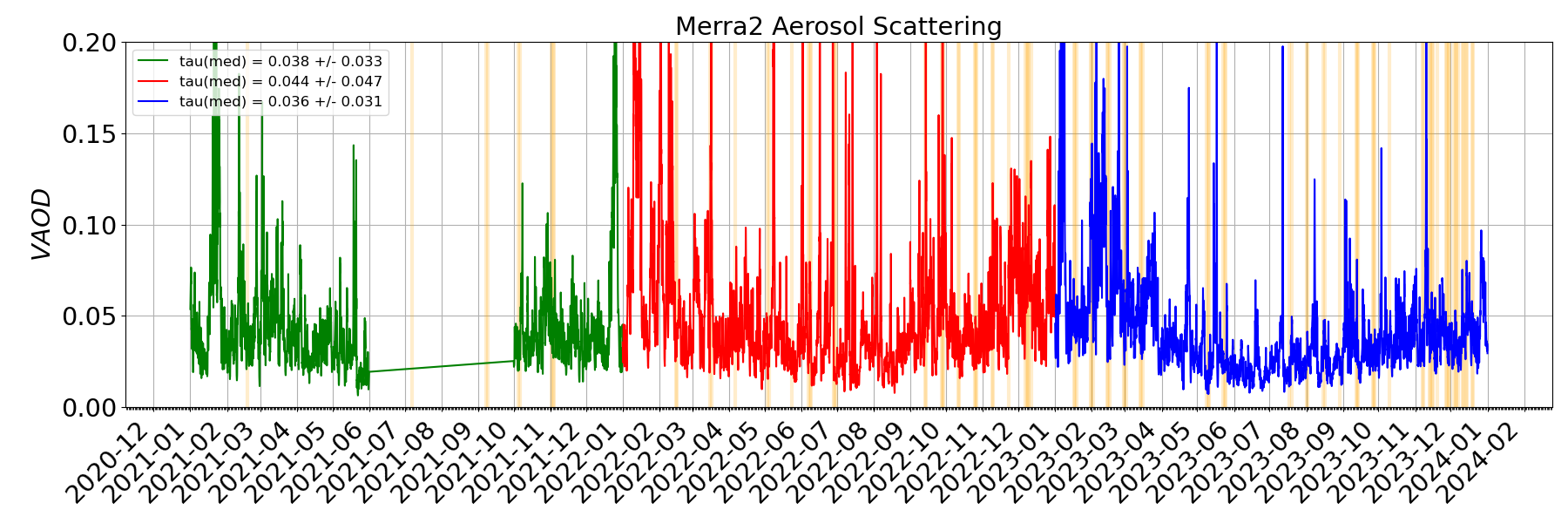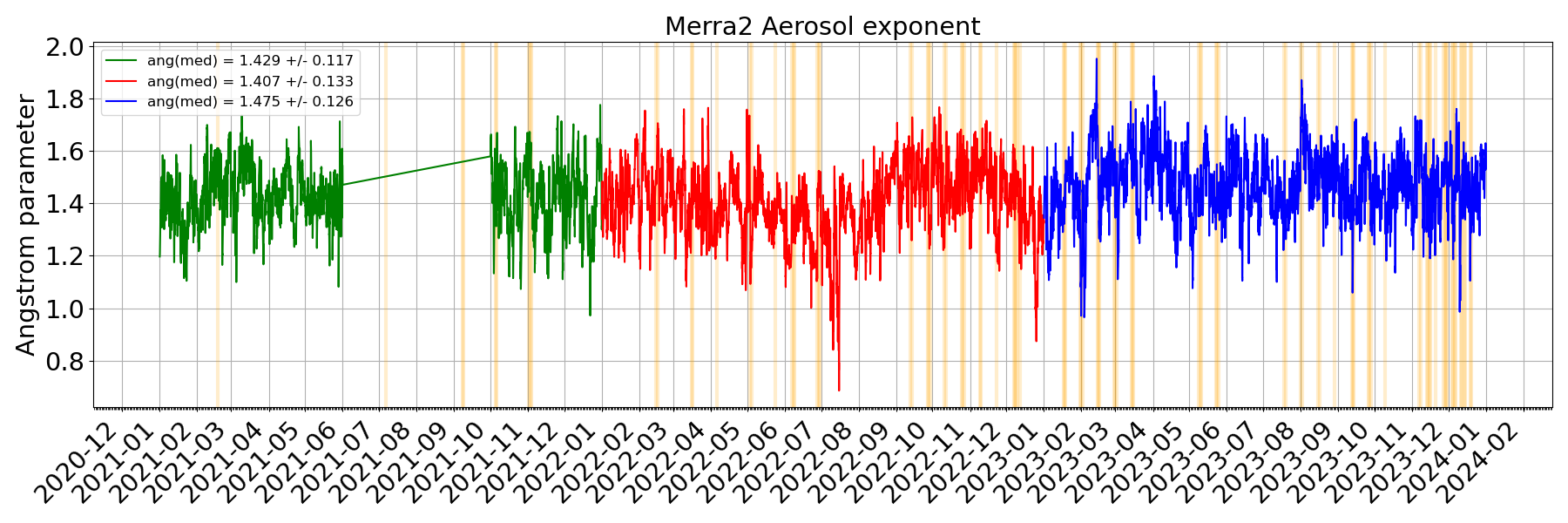Three years of atmospheric parameters above Rubin-LSST site from MERRA2 database#
Abstract
While the Auxtel auxiliary telescope of the Rubin LSST observatory observes the sky in spectroscopic mode to determine atmospheric parameters, we report in this note the parameters recorded in the MERRA2 GMAO database in a region of the El Pachon site. Although these data may not correspond to those valid for telescope observations, they can nevertheless provide valuable indications of annual or seasonal variational trends and fluctuations, and present correlations with local measurements.
Introduction#
The auxiliary telescope has been observing the sky in spectroscopic mode since early 2021, measuring atmospheric transparency to characterize the contribution of atmospheric transmission to the spectral shape of the Rubin-LSST main telescope’s color filter passbands.
The shape of the spectral transmission curve of the atmosphere in the optical range covered by LSST is determined both by the mass thickness of the atmosphere and by the molecular composition of certain atmospheric components. While the relative composition of Nitrogen and Oxygen molecules is stable, precipitable water and Ozone molecules are variable, leading to variations in atmospheric transmission in certain wavelength ranges.
In addition, small particles of atmospheric matter known as aerosols, which vary in nature and size and in altitude distribution, attenuate atmospheric transmission.
Atmospheric parameters time series#
Precipitable water vapor#

Ozone#

Aerosols#
Vertical aerosol depth#

Aerosol exponent#

Summary and Conclusion#
References#
MERRA2:
See the Documenteer documentation for tips on how to write and configure your new technote.